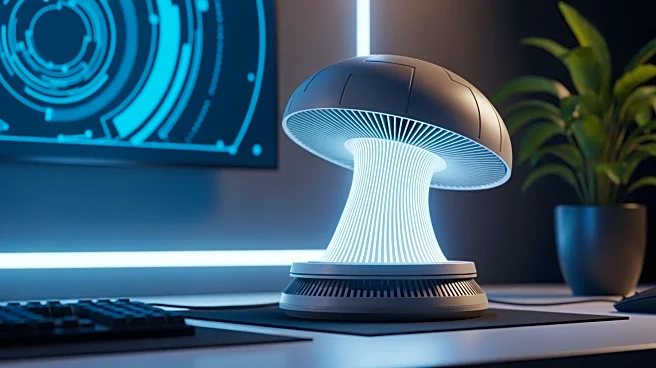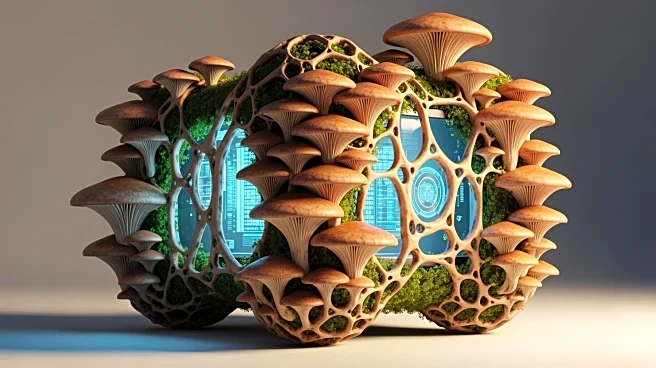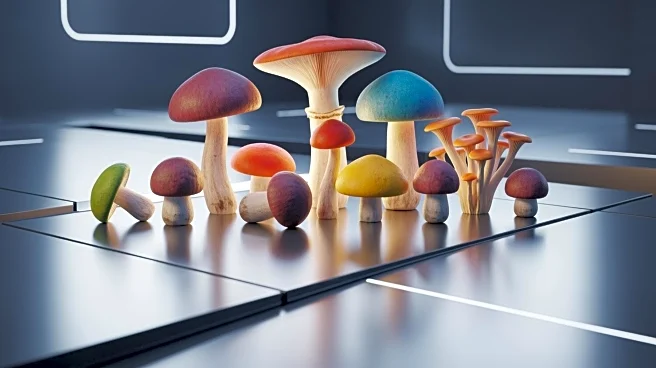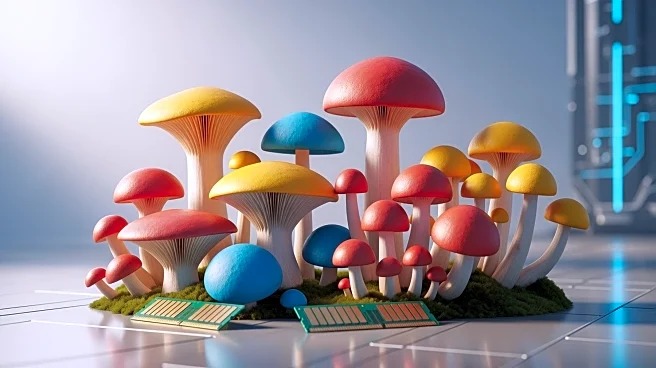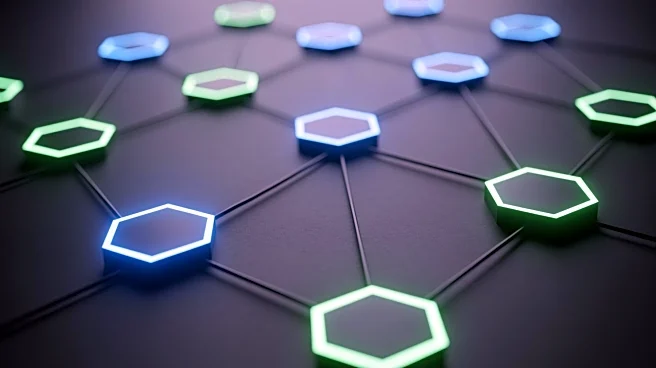What's Happening?
Researchers at Ohio State University have discovered a method to use mushrooms as organic memristors, which are components that act like memory cells in computing devices. This innovative approach involves
cultivating edible fungi, such as shiitake mushrooms, to function as memory devices that mimic semiconductor chips. The study, led by John LaRocco, highlights the potential of fungal electronics to create eco-friendly computing systems that require less power and reduce electronic waste. The findings were published in PLOS One, showcasing the ability of mushroom-based devices to switch between electrical states with high accuracy.
Why It's Important?
The development of mushroom-based computing devices represents a significant advancement in sustainable technology. By utilizing biodegradable and inexpensive fungal materials, this approach could reduce reliance on rare minerals and high-energy manufacturing processes associated with conventional semiconductors. The potential for these devices to mimic neural activity offers computational and economic advantages, making them a promising alternative for future computing systems. This innovation aligns with growing environmental awareness and the need for sustainable solutions in technology.
What's Next?
Researchers aim to refine cultivation methods and reduce the size of fungal components to make them viable alternatives to traditional microchips. Future work will focus on scaling up fungal computing for applications in edge computing, aerospace exploration, and enhancing autonomous systems and wearable devices. The continued development of fungal electronics could lead to broader adoption in various industries, promoting eco-friendly computing solutions.
Beyond the Headlines
The use of mushrooms in computing highlights the intersection of biology and technology, offering a glimpse into the future of bioelectronics. This approach not only addresses environmental concerns but also challenges traditional notions of computing materials, paving the way for innovative designs inspired by natural systems.


